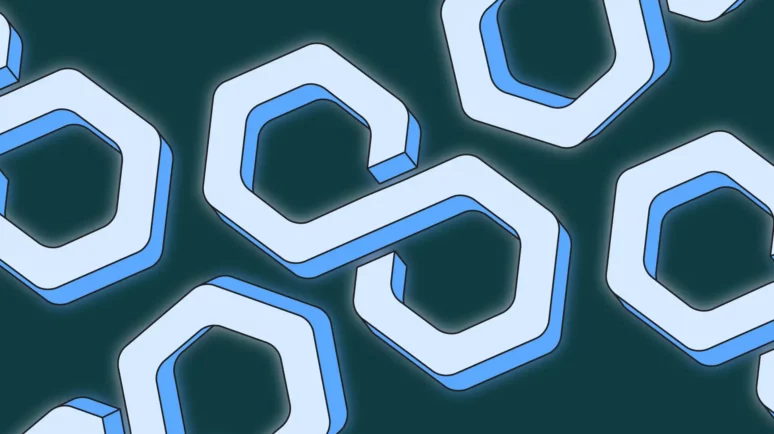MATIC Price Unaffected by Franklin Templeton P2P Fund News – Reasons for Polygon’s Selection and Potential for Another Drop

Why Did Franklin Templeton Chose Polygon? | Credit: Getty Images
Key Takeaways
- Franklin Templeton announced peer-to-peer transfers for its fund on April 25.
- The fund uses the Stellar blockchain but is also supported by Polygon.
- The MATIC price was unmoved by the news but has increased 22% since April 13.
The MATIC price performance in 2024 has been lackluster. Despite an initial increase that led to a new yearly high in March, the price has fallen 25% year to date. The decrease caused a breakdown from a long-term support area.
After another rejection on April 24, the question arises if the correction is complete, or if there is more downside until the price eventually reverses trend.
What is Franklin Templeton’s Fund?
In 2021, Franklin Templeton announced the on-chain US Government Money Fund . It stands as the inaugural US registered fund utilizing public blockchain to record share ownership. The fund invests in assets in US government securities and repurchase agreements. It was built in the Stellar blockchain, and the Stellar development foundation made a significant investment into the fund.
In April 2023, Franklin Templeton announced the fund will be supported by the Polygon blockchain. They did this to ensure compatibility with the Ethereum blockchain, which had an ecosystem valued at $260 billion at the time.
On April 25, Franklin Templeton announced that peer-to-peer shares will be available for transfer in both the Stellar and Polygon blockchains. This is done through the BENJI token, which represents one share of the fund. The fund currently holds over $360 million in assets.
Why Polygon?
The main reason for choosing to build on the Stellar blockchain is the lower transaction fees. Stellar has an incremental transaction fee of 0.000001 XLM.
Then, Polygon was chosen as an Ethereum Layer-2 solution to give access to the Ethereum ecosystem. Polygon can conduct more transactions per second at faster block time and lower time to finality compared to Ethereum. Also, since Polygon is an Ethereum Layer-2 solution, is benefits from the latter’s security.
However, the interesting question is why Franklin Templeton chose Polygon instead of other Ethereum Layer-2 solutions such as Arbitrum or Optimism.
In April 2023, when the asset management firm announced that they are launching the fund on Polygon, both Arbitrum and Optimism had lower transaction fees compared to Polygon. More specifically, a transaction in Arbitrum cost $0.13, one in Optimism $0.23 while one in Polygon $0.40.

In April 2023, Arbitrum also has a higher Total Value Locked (TVL) at $2.25 billion, compared to $1 billion for Polygon and $930 million for Optimism. Finally, Arbitrum had more than double the number of users compared to Polygon in April 2023, at more than 300,000 to 150,000.
Rollups Provide Answer
Upon closer examination, it appears that the primary distinction lies in the type of rollup employed by the layer-2 solutions. Polygon’s zkEVM launched in March 2023, shortly before the Franklin Templeton announcement. So, Polygon uses zk-rollups while Arbitrum and Optimism use optimistic rollups.

Zk-rollups enable the verification of a transaction without revealing any data about the transaction itself, adding to the security and privacy of the blockchain. Optimistic rollups operate under the assumption that a transaction is valid unless someone submits a proof of fraud. This can last for several weeks, delaying the possibility of withdrawing funds.
Therefore, the main difference is in transaction finality. Zk-rollups usually offer much faster finality time compared to optimistic ones. More specifically, Polygon needs slightly more than four minutes to finality, while Optimism and Arbitrum both need 16 minutes.
MATIC Falls Below Long-Term Support
The weekly time frame technical analysis shows that MATIC has fallen since reaching a high of $1.29 in March 2024. The decrease caused a breakdown from the $0.75 horizontal area, which had been providing support since November 2023. After the breakdown, MATIC validated the area as resistance (red icon).

The weekly RSI & MACD both give bearish signs. The RSI fell below 50 while the MACD made a bearish cross (red circles). The next support is at $0.68, created by a nearly 700-day ascending support trend line.
Matic Price Prediction: When Will the Correction End?
The daily time frame price action for MATIC suggests the price is nearing the end of its A-B-C correction (white) that started in March. However, it also suggests another downward movement is likely before the correction finishes.
The sub-wave count is in black, showing the price has just finished sub-wave four. The top of sub-wave four coincided with the $0.75 horizontal resistance area. Due to the rejection, it is possible that wave five has started.
If so, MATIC can fall to $0.58, validating the long-term ascending support trend line. In turn, this will complete the correction.

The daily RSI aligns with this possibility, since another retest of the trend line can confirm a bullish divergence (green). A similar bullish divergence in August 2023 led to a 160% increase, culminating with the yearly high in March 2024. A similar increase can take the MATIC price to a new yearly high.
Closing above the $0.75 area will confirm the correction is complete.
MATIC Faces More Downside Before a Reversal
The MATIC price bounce ongoing since April 13 resembles a corrective structure. Combined with the rejection from the $0.75 area, it indicates the upward trend is corrective. As a result, another decrease is likely before the trend reverses.


